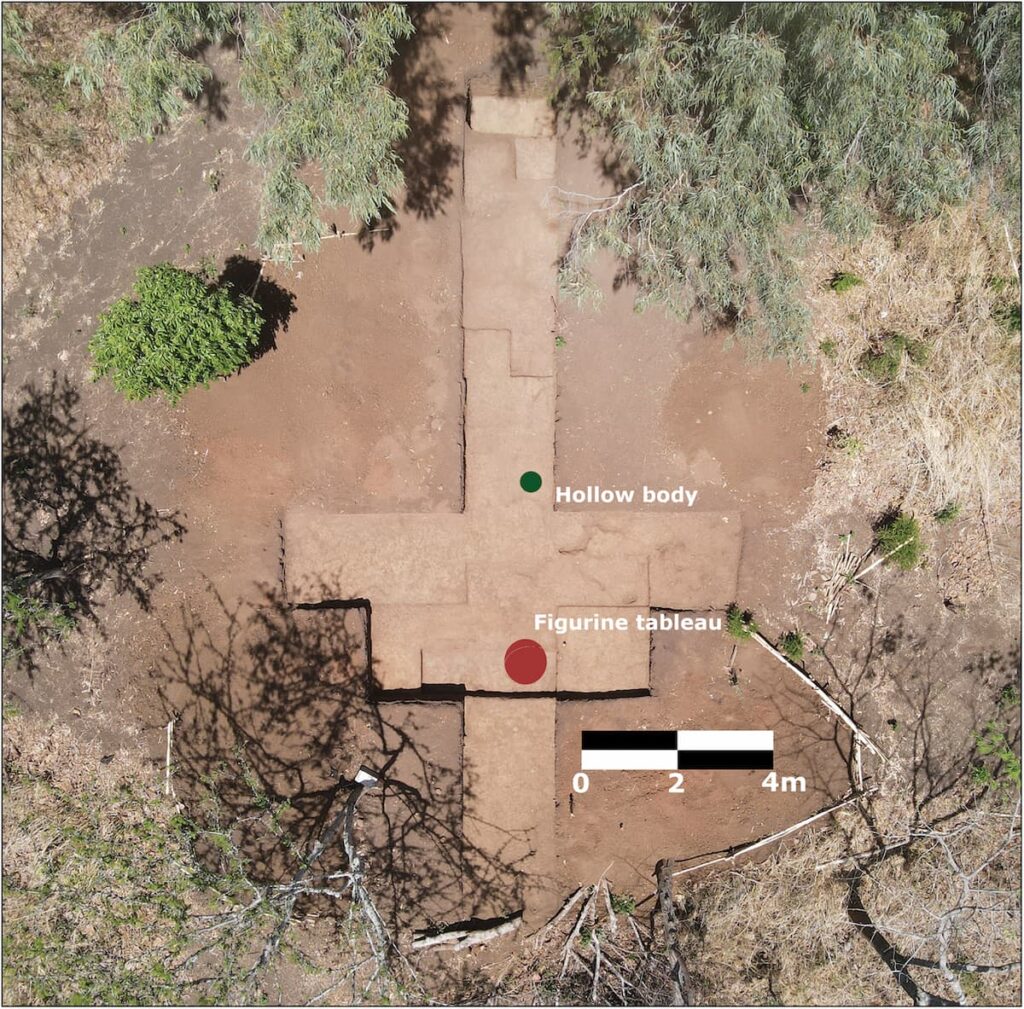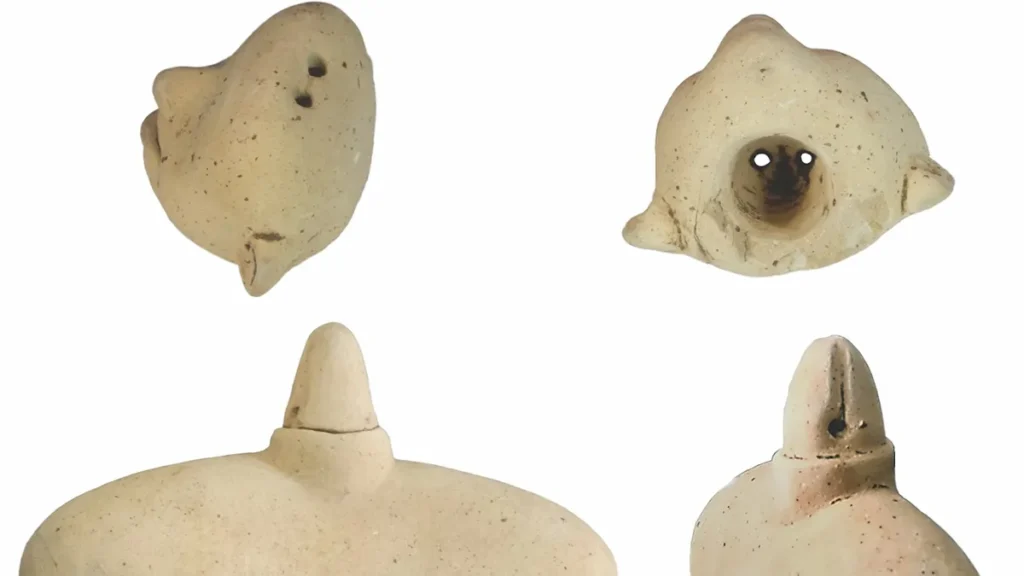A recent archaeological excavation in El Salvador has revealed striking findings that radically change our understanding of the rituals and performances of the Mesoamerican Middle Preclassic Period. Led by archaeologist Jan Szymański from the University of Warsaw, the team discovered five ceramic figurines resembling ancient puppets, dated to around 400 BC and buried at the top of a pyramid. These unique findings offer a fascinating perspective on the cultural practices of the region’s indigenous people.
The figurines range in size from 10 cm to 30 cm, and all have open mouths, with some showing tongues. The three largest figurines have removable heads and holes in their necks. It was discovered that by passing a string through these holes, the heads could be moved, creating the illusion of singing or speaking. These features suggest that the figurines may have been used as ancient puppet-like dolls.

Radiocarbon dating and ceramic analysis indicate that the figurines belong to the Middle Preclassic Period, a time when Mesoamerican cultures were developing writing systems and establishing complex societies. The figurines belong to a style known as “Bolinas figures.” Previously found in various archaeological sites, these figurines were usually found fragmented or discarded in trash heaps. The discovery of figurines with movable heads in a burial ceremony at Tak’alik Ab’aj in Guatemala in 2012 suggests that these figurines symbolized a journey to the underworld. It is believed that the San Isidro region may have maintained a more egalitarian social structure during this transformative period.
The way the figurines were positioned is associated with sunset and death symbolism in the Mesoamerican worldview. It is thought that the figurines may have been adorned with clothing and jewelry and used to portray different characters in various performances. It is noted that the figurines played an important role in religious rituals, and their final position at the top of the pyramid supports this. San Isidro is thought to have been a trade center and a stage for the interaction of different cultures. It is suggested that San Isidro was organized without a central ruler, and the puppets may have represented different languages, emphasizing the diversity of the community.

Szymański and his team continue to excavate the pyramid to learn more about the performances and rituals associated with the puppets. This discovery sheds light on the region’s cultural heritage by providing new information about ancient rituals and performances in Mesoamerica.
Szymański, J., & Prejs, G. (2025). Of puppets and puppeteers: Preclassic clay figurines from San Isidro, El Salvador. Antiquity, 1–17. doi:10.15184/aqy.2025.37
Cover Image credit: J. Przedwojewska-Szymańska/PASI; Antiquity





